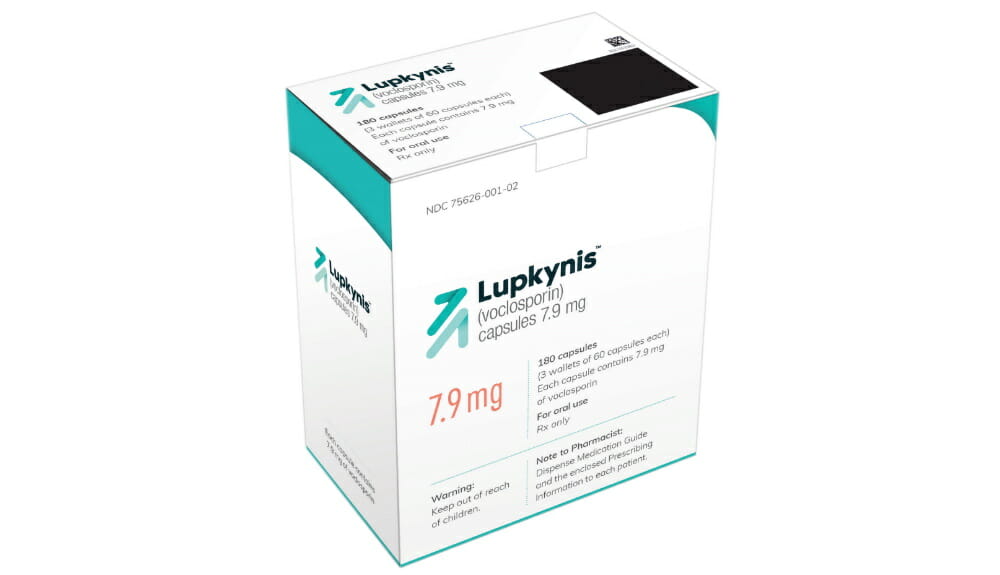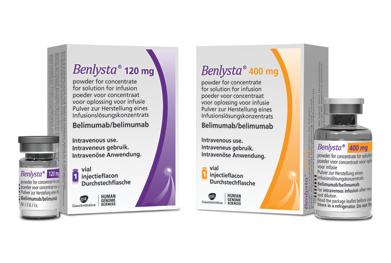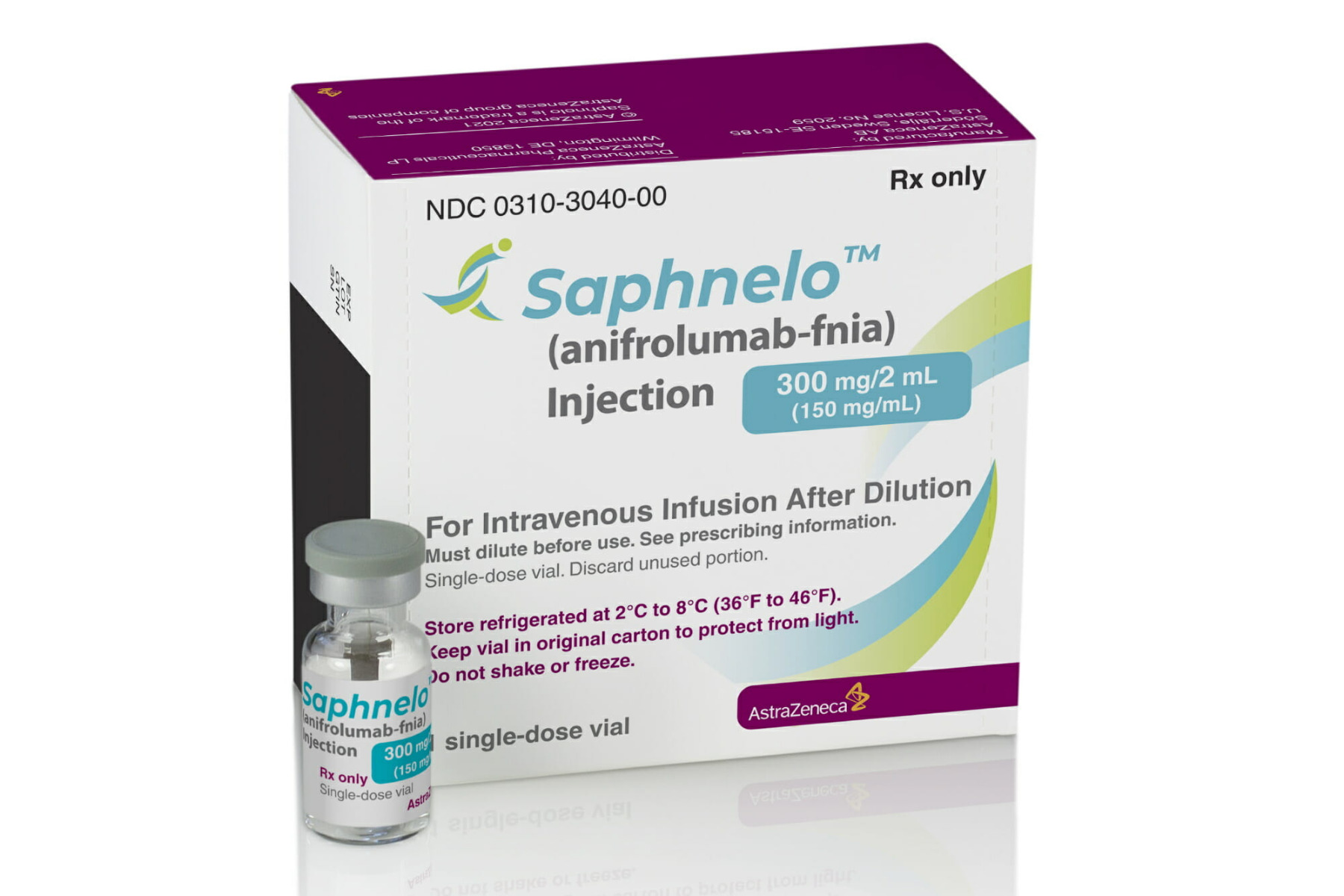New Systemic Lupus Erythematosus treatments 2024
New Systemic Lupus Erythematosus Treatments 2024
Systemic Lupus Erythematosus (SLE), commonly known as lupus, is a chronic autoimmune disease that can cause inflammation and damage to various parts of the body, including the skin, joints, kidneys, heart, lungs, blood vessels, and brain. The exact cause of SLE is unknown, but it is believed to result from a combination of genetic, environmental, and possibly hormonal factors. Symptoms of lupus can vary widely and may include fatigue, joint pain, rash, and fever. These symptoms can range from mild to severe and may come and go in episodes known as flares. Diagnosing lupus often requires multiple tests and careful evaluation due to its complex nature and the variability of symptoms.
When considering treatment options for SLE, it is important to work closely with a healthcare provider to tailor a plan that addresses individual symptoms and disease severity. Common medications used to manage lupus include nonsteroidal anti-inflammatory drugs (NSAIDs) for joint pain and stiffness, antimalarial drugs like hydroxychloroquine to help control the immune system, corticosteroids to reduce inflammation, and immunosuppressants for more severe cases. Recently, biologic therapies such as belimumab have been approved for certain patients with SLE. Treatment plans may also involve lifestyle modifications, such as protecting the skin from sunlight and maintaining a balanced diet. Since lupus is a lifelong condition, ongoing monitoring and adjustment of treatments are crucial for managing the disease effectively.

Treatment options
| Treatment option | Estimated cost | Efficacy | Eligibility |
|---|---|---|---|
| Nonsteroidal anti-inflammatory drugs (NSAIDs) | $4 - $100 | Mild to moderate pain relief | Most patients, unless contraindicated |
| Antimalarial drugs (e.g., Hydroxychloroquine) | $15 - $100 | May prevent flares; helps with skin and joint symptoms | Most patients, monitoring for eye toxicity required |
| Corticosteroids | $5 - $200 | Highly effective for reducing inflammation | Patients with moderate to severe symptoms |
| Immunosuppressants (e.g., Azathioprine, Methotrexate) | $30 - $500 | Used for severe disease; helps reduce steroid dosage | Patients with organ-threatening disease |
| Belimumab (Benlysta) | $2,500 - $3,500 | Reduces disease activity, especially in patients with high disease activity | Approved for patients with active, autoantibody-positive SLE |
| Voclosporin (Lupkynis) | $4,500 - $5,500 | Improves renal response rates in lupus nephritis | Approved for adult patients with active lupus nephritis |
| Anifrolumab (Saphnelo) | $2,000 - $3,000 | Reduces disease activity in moderate to severe cases | Approved for adult patients with moderate to severe SLE |
| Rituximab (Off-label use) | $3,000 - $4,000 | May be effective in refractory SLE cases | Patients not responding to conventional therapy |
| Mycophenolate mofetil (Off-label use) | $50 - $300 | Used for nephritis; may be effective for non-renal SLE | Patients with lupus nephritis or refractory SLE |
| Experimental treatments (e.g., Stem cell therapy) | Varies widely | Varies; still under investigation | Patients enrolled in clinical trials |
Treatments options in detail
Nonsteroidal Anti-Inflammatory Drugs (NSAIDs)
Nonsteroidal Anti-Inflammatory Drugs (NSAIDs) are commonly used to manage pain and inflammation associated with Systemic Lupus Erythematosus (SLE). They can help alleviate symptoms such as joint pain and swelling. Over-the-counter options include ibuprofen and naproxen, while prescription-strength NSAIDs may be used for more severe symptoms. It is important to monitor for potential side effects, including gastrointestinal bleeding and kidney damage, especially with long-term use.
Antimalarial Drugs
Antimalarial drugs, such as hydroxychloroquine (Plaquenil) and chloroquine, are standard treatments for SLE. They can help control lupus symptoms like fatigue, skin rashes, and joint pain. These medications may also have a protective effect against flares of the disease. Regular eye exams are recommended for individuals on antimalarial drugs due to the risk of retinal toxicity.
Corticosteroids
Corticosteroids, such as prednisone, are potent anti-inflammatory agents used to treat moderate to severe SLE flares. They can be administered orally or intravenously, depending on the severity of the symptoms. While corticosteroids are effective in controlling acute symptoms, their long-term use is limited by significant side effects, including osteoporosis, weight gain, diabetes, and increased risk of infections.
Immunosuppressants
Immunosuppressants are medications that reduce the activity of the immune system. For SLE patients with more severe disease manifestations, such as kidney involvement, immunosuppressants like azathioprine, methotrexate, and mycophenolate mofetil may be prescribed. These drugs can help control the disease but require careful monitoring due to risks of infection and liver toxicity.
BLyS-Specific Inhibitors
Belimumab (Benlysta) is a biologic therapy approved for the treatment of SLE. It is a monoclonal antibody that inhibits the B-lymphocyte stimulator (BLyS) protein, which plays a role in the survival and differentiation of B cells involved in the autoimmune response. Benlysta can be administered through intravenous infusion or subcutaneous injection and is used in addition to standard therapy to reduce disease activity. It is not recommended for patients with severe active lupus nephritis or central nervous system lupus due to a lack of evidence in these subgroups.
Calcineurin Inhibitors
Voclosporin (Lupkynis) is a calcineurin inhibitor recently approved for the treatment of adults with active lupus nephritis, a common and serious complication of SLE. It is used in combination with a background immunosuppressive therapy regimen. Voclosporin works by suppressing the immune system to reduce inflammation in the kidneys. Its use requires monitoring of kidney function and blood pressure, as it can have nephrotoxic effects and increase the risk of hypertension.
Interferon Receptor Antagonist
Anifrolumab (Saphnelo) is an interferon receptor antagonist approved for the treatment of moderate to severe SLE. It binds to the type I interferon receptor, blocking the activity of interferons that are believed to play a role in SLE pathogenesis. Saphnelo is administered as an intravenous infusion and has been shown to reduce disease activity and the need for oral corticosteroids. Monitoring for potential side effects, including herpes zoster and bronchitis, is necessary.
Experimental Treatments
Several experimental treatments for SLE are currently under investigation. These include new biologic agents targeting different aspects of the immune system, small molecule drugs, and cell-based therapies. For example, rituximab, a monoclonal antibody against CD20-positive B cells, has been studied in SLE patients, although it is not FDA-approved for this indication. Other investigational therapies focus on inhibiting cytokines or cellular pathways implicated in the disease process.
Off-Label Use of Medications
Some medications may be used off-label for the treatment of SLE. This means the medication is FDA-approved for other conditions but has shown some efficacy in SLE based on clinical experience or smaller studies. These can include other immunosuppressive or biologic agents not specifically approved for SLE. Physicians may consider off-label treatments based on individual patient needs and the clinical judgment of potential benefits versus risks.
Lifestyle Modifications and Adjunctive Therapies
In addition to pharmacological treatments, lifestyle modifications and adjunctive therapies play a role in managing SLE. Patients are advised to practice sun protection, maintain a healthy diet, exercise regularly, and avoid smoking. Additionally, physical therapy can help improve joint function, and psychological support may be beneficial in coping with the chronic nature of the disease. Complementary therapies, such as acupuncture or massage, may provide symptomatic relief for some patients, although these should be discussed with a healthcare provider.
Conclusion
The treatment of Systemic Lupus Erythematosus is multifaceted and tailored to the individual's disease severity and organ involvement. It typically involves a combination of medications that reduce inflammation, modulate the immune system, and manage symptoms. Newer treatments like Benlysta, Lupkynis, and Saphnelo offer additional options for patients with certain manifestations of SLE. Experimental treatments and off-label use of medications continue to be explored to improve outcomes for patients with this complex autoimmune disease.
Symptoms
Common Symptoms of Systemic Lupus Erythematosus
Systemic Lupus Erythematosus (SLE) is a chronic autoimmune disease that can affect multiple organ systems. The most common symptoms experienced by individuals with SLE include fatigue, fever, and joint pain, stiffness, or swelling. These symptoms are often the initial indicators of the disease and can vary in intensity.
Fatigue is one of the most prevalent symptoms, affecting the majority of patients with SLE. It can be debilitating and significantly impact daily activities and quality of life. Fever is another common symptom, which may be low-grade and persistent or occur intermittently. Joint involvement typically presents as pain, stiffness, and swelling, resembling arthritic symptoms, and can affect any joint in the body.
Skin manifestations are also common in SLE, with the classic malar rash, often described as a butterfly-shaped rash across the cheeks and nose, being a hallmark of the disease. Photosensitivity, resulting in skin lesions or rashes after exposure to sunlight, is another frequent symptom. Discoid rashes, which are thick, scaly patches of skin, can also occur and may lead to scarring.
Additional Symptoms Involving the Skin and Mucous Membranes
Patients with SLE may experience a variety of other skin and mucous membrane issues. Oral or nasopharyngeal ulcers, usually painless, can occur and are often an overlooked symptom. Hair loss, known as alopecia, is not uncommon and may be diffuse or manifest in patches.
Raynaud's phenomenon, a condition where fingers and toes turn white or blue and feel numb in response to cold temperatures or stress, can also be associated with SLE. Livedo reticularis, a lace-like purplish pattern on the skin, particularly on the legs, may appear in some individuals.
Neurological and Psychiatric Symptoms
Neurological involvement in SLE can lead to a range of symptoms. Headaches, including migraines, are frequently reported by patients. Cognitive dysfunction, manifesting as confusion, memory loss, or difficulty concentrating, is also common. More severe neurological complications, such as seizures and psychosis, although less common, can occur and are significant in the diagnosis and management of SLE.
Mood disorders, including depression and anxiety, are prevalent among individuals with SLE, often as a result of the chronic nature of the disease and its impact on lifestyle and well-being.
Cardiopulmonary Symptoms
The heart and lungs can be affected by SLE, leading to a variety of cardiopulmonary symptoms. Patients may experience chest pain that can be indicative of pericarditis (inflammation of the lining around the heart) or pleuritis (inflammation of the lining around the lungs). Shortness of breath may also occur and can be a sign of lung involvement, such as pneumonitis or pulmonary hypertension.
Cardiovascular disease is a significant risk factor for individuals with SLE, and symptoms such as palpitations or irregular heartbeats should be evaluated promptly.
Gastrointestinal Symptoms
Gastrointestinal issues are not uncommon in SLE and can include symptoms such as abdominal pain, nausea, and vomiting. These symptoms may be a result of inflammation in the gastrointestinal system or side effects of medications used to treat SLE.
Patients may also experience difficulty swallowing or gastroesophageal reflux disease (GERD), which can cause heartburn and indigestion.
Renal Symptoms
Renal involvement, known as lupus nephritis, is a serious complication of SLE and can lead to symptoms such as foamy urine, blood in the urine, or swelling in the legs, ankles, or feet due to impaired kidney function. Monitoring kidney health is a critical aspect of managing SLE, as lupus nephritis can progress to kidney failure if not adequately treated.
Hematologic Symptoms
Hematologic abnormalities are common in SLE, with patients often presenting with anemia, leukopenia (low white blood cell count), or thrombocytopenia (low platelet count). These conditions can result in symptoms such as fatigue, increased susceptibility to infections, and easy bruising or bleeding.
Ocular Symptoms
Ocular symptoms in SLE can include dry eyes, which is part of Sjögren's syndrome that often accompanies lupus. Patients may also report vision changes or eye pain. Inflammation of different parts of the eye, such as uveitis or retinal vasculitis, can occur, although less commonly, and can lead to more serious visual complications.
Musculoskeletal Symptoms
Aside from joint pain and stiffness, individuals with SLE may experience muscle pain and weakness. This musculoskeletal involvement can contribute to the overall fatigue and physical limitations experienced by patients.
Other Possible Symptoms
SLE is a disease with a wide range of potential symptoms, and patients may experience additional issues such as lymphadenopathy (swollen lymph nodes), serositis (inflammation of the serous membranes), and symptoms related to the specific organ systems affected by the disease.
It is important to note that the symptoms of SLE can vary greatly from person to person, can change over time, and can overlap with other conditions, making diagnosis and management a complex process. Regular monitoring and comprehensive care from a team of healthcare professionals are essential for individuals with SLE.
Cure
Currently, there is no cure for Systemic Lupus Erythematosus (SLE), which is a chronic autoimmune disease that can cause inflammation and damage to various parts of the body including the skin, joints, kidneys, brain, and other organs. The goal of treatment for SLE is to control symptoms, prevent organ damage, and improve the quality of life for patients. Treatments are tailored to the individual's specific symptoms and the severity of their disease.
Medications Used in SLE Management
Several types of medications are used to manage the symptoms of SLE and prevent flare-ups. These include nonsteroidal anti-inflammatory drugs (NSAIDs) for joint pain and stiffness, antimalarial drugs such as hydroxychloroquine which can help control the skin and joint symptoms, corticosteroids to reduce inflammation, and immunosuppressants which can help control the immune system when it attacks healthy tissues.
Biologic Agents and Targeted Therapies
In recent years, biologic agents and targeted therapies have been developed for the treatment of SLE. Belimumab, a B-lymphocyte stimulator (BLyS)-specific inhibitor, is the first drug that was approved specifically for the treatment of SLE in over 50 years. It is designed to reduce the activity of B cells, which are a type of white blood cell that can be overactive in SLE patients. Other biologics and targeted therapies are currently under investigation and may provide additional options for patients in the future.
Off-Label Medications and Investigational Treatments
Off-label medications, which are drugs approved for other conditions but used for SLE, and investigational treatments are also part of the therapeutic landscape for SLE. These include drugs like rituximab, an anti-CD20 monoclonal antibody originally approved for certain types of cancer and conditions like rheumatoid arthritis. Clinical trials are ongoing to assess the efficacy and safety of various other potential treatments for SLE.
Lifestyle and Supportive Care
Lifestyle modifications and supportive care are also important components of managing SLE. Patients are advised to protect themselves from sun exposure, as UV light can trigger skin lesions and other symptoms. Regular exercise and a healthy diet can help maintain overall health and reduce the risk of cardiovascular disease, which SLE patients are at higher risk for. Psychological support and counseling may be beneficial for coping with the emotional and mental health challenges that can accompany a chronic illness like SLE.
Stem Cell Transplantation
Stem cell transplantation is an experimental approach that has been studied in severe cases of SLE. This procedure involves the destruction of the patient's immune system using chemotherapy or radiation, followed by a transplantation of stem cells to rebuild a new, hopefully less disease-prone, immune system. This treatment is still considered high-risk and is not a standard practice for SLE patients.
Research and Future Directions
Research into the underlying causes of SLE and the development of new treatments is ongoing. Scientists are exploring the genetic, environmental, and hormonal factors that may contribute to the development and progression of the disease. Clinical trials continue to test new medications and treatment strategies with the hope of finding more effective ways to manage SLE and ultimately, to discover a cure.
Conclusion
While there is no cure for SLE at this time, the treatments available can help manage the symptoms and improve the quality of life for many patients. The management of SLE is complex and requires a personalized approach, often involving a team of healthcare providers. Patients with SLE should work closely with their healthcare team to develop a treatment plan that is right for them and stay informed about new developments in the treatment of the disease.
Access Systemic Lupus Erythematosus medicines today
If Systemic Lupus Erythematosus medicines are not approved or available in your country (e.g. due to supply issues), you can access them via Everyone.org.
How Everyone.org works

Make an enquiry
Choose the medicine you want to access, answer a couple of questions, and upload your prescription to speed things up. We’ll get back to you within 24 hours.


Make an enquiry
Choose the medicine you want to access, answer a couple of questions, and upload your prescription to speed things up. We’ll get back to you within 24 hours.


Breeze through the paperwork
We'll guide you through the required documents for importing unapproved medicine, ensuring you have all the necessary information.


Get a personalized quote
We’ll prepare a quote for you, including medicine costs and any shipping, administrative, or import fees that may apply.


Receive your medicine
Accept the quote and we’ll handle the rest - sourcing and safely delivering your medicine.

Some text on this page has been automatically generated. Speak to your physician before you start a new treatment or medication.
Let's talk
If you have any questions, call us or send us a message through WhatsApp or email:
Contact us





